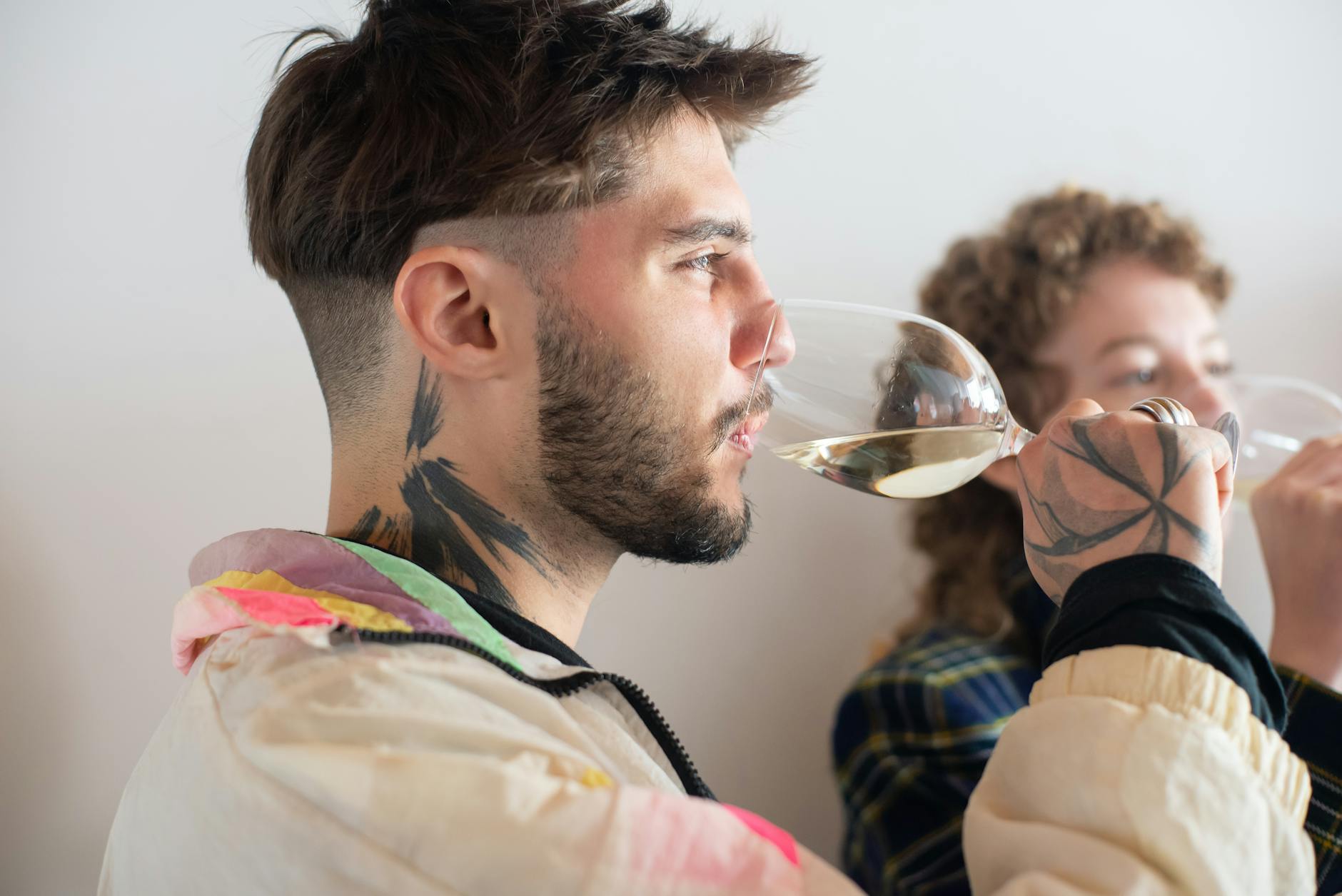As a wine lover, attending a wine tasting party is one of the funniest ways to try new wines and pamper your palate.
The wine tasting party offers you a fun environment where you can compare different wines and regional varieties. It is also a kind of activity where you will enjoy learning something new about both wines and wine culture. When you attend such a wine tasting event, make sure to play the game by its rules. As everyone knows a game is only as good as its rules. If you will participate in a wine tasting event, check these 4 simple step by step tips before the event.
When the wine is poured into the glass, the colour and appearance of the wines are the first things that you examine. Hold the glass on a white background and tilt away from you to examine the colour. Try to recognise the tone in the glass, for example, is it pale yellow, yellow-green or gold? Or does it have a ruby red, red-orange or purplish colour? Then examine the opacity. Is it dark or clear? Is it light or blurry?
Step 2: Catch the Fragrances
Once you have decided on the colour, swirl the wine in the glass to release the aromas. Then leave the rest to your nose and try to perceive what the scents remind you of. Can you smell any fruit, vegetable, flower, spice or can you identify more unusual flavours like smoke, caramel or honey?
Step 3: Now Taste It!
Take a sip, but don't swallow the wine. Let the wine swirl gently in your mouth. Is there any bitterness, sourness or sweetness? Then try to identify the flavour profile such as fruits, spices or woody.
STEP 4: Finish
Swallow the wine and think about what flavour it leaves. Are the flavours lingering or disappearing quickly? You can define the finish as light-bodied (like watery), medium (like milk) or full-bodied (like creamy).
IMPORTANT RULES:
The tasting order is important.
It would be more appropriate to start with whites from dry to sweet. Afterwards, tasting should be done by following the order from light-bodied wines to full-bodied wines in reds, from young wines to aged wines. If you're tasting blind, be sure to number each bottle so that guests can taste it in the correct order.
Temperature is one of the factors affecting the tasting.
Each kind of wine has a certain temperature for serving. Generally, most people serve white wines too cold or red wines too hot. When you serve the wine too cold, you may have difficulty perceiving the finer nuances/flavours, and when you serve it too hot, you can only taste the alcohol. The exception is sparkling wines that are served cold, so they can be chilled overnight and served straight from the refrigerator. Similarly, red wines are often said to be served at 'room temperature', but this saying was invented in the Victorian age when the rooms were a little cooler. Optimum service temperatures for a pleasant drink are generally 16 to 18 degrees for red-aged wines, 12 to 16 for young reds, 8 to 10 degrees for full whites, and 6 to 8 degrees for young whites.
Don't forget to decant aged wines.
Aeration can be done for aged wine to balance the density of aromas with air. There is no obligation to aerate every wine. Young wines do not need to be aerated. The question of how long wines should be aerated varies according to each wine, and the necessity or effectiveness of aeration can be controlled by tasting.
Holding style of the wine glass.
Remind your guests to hold the glass by the stem, as holding the glass in the palm will change the temperature of the wine. Always rinse the glass before moving on to the next wine.
Start with a clean palate.
You should drink water to clear the palate and taste some bread or plain crackers between each wine. It is important to start tasting the new wine with a clean palate in terms of the effectiveness of the tasting.
Avoid cheese before tasting.
Although wine and cheese are a common pairing, cheese is recommended during the wine tasting. An old French saying is, 'buy it with bread, sell it with cheese', so if you are buying wine, try it with bread to capture its true taste, and if you sell it, offer cheese because this can help mask the flavours (if it's a bad wine!). Cheese covers the taste buds on the tongue with a layer of fat, preventing you from perceiving other flavours.
If you've eaten some cheese before the wine, you can eat a slice of apple to reopen the taste buds.
Now that you've learned all the secret steps, it's time to participate in a tasting party with you. Do not forget to write in the comment whether it works or not. See you in the next article






No comments:
Post a Comment